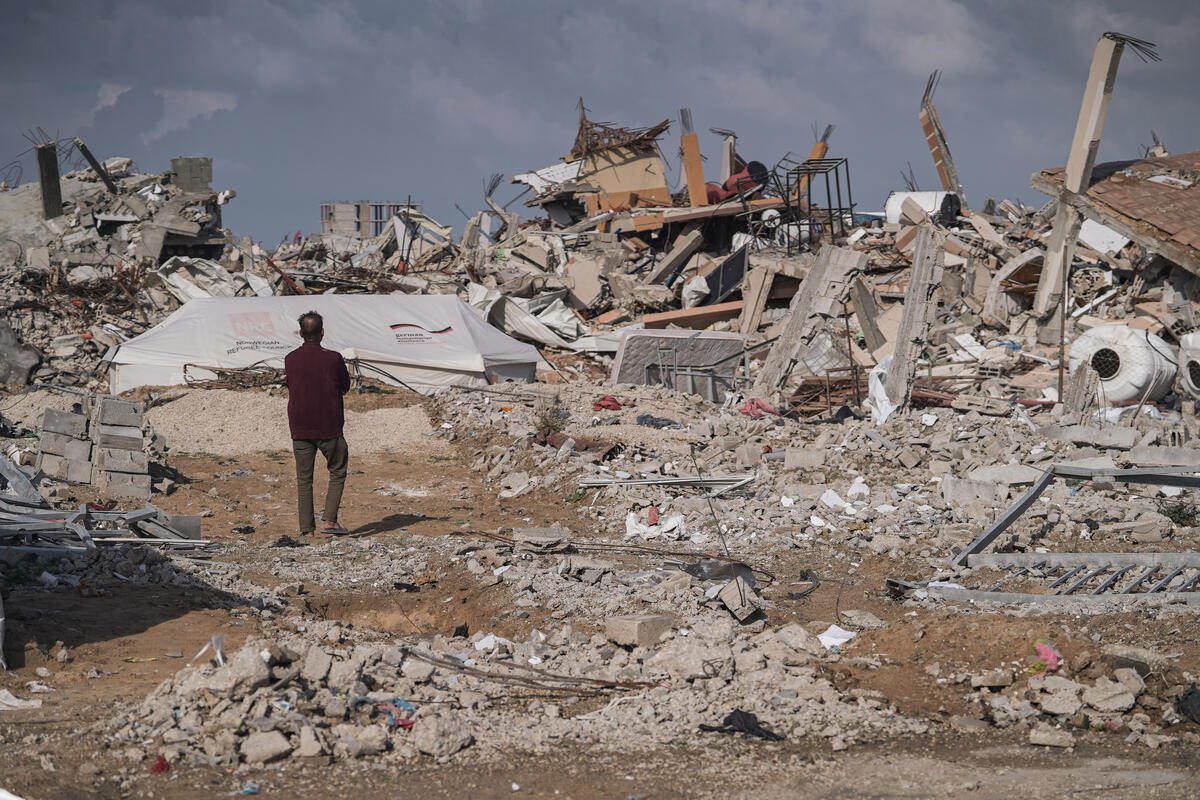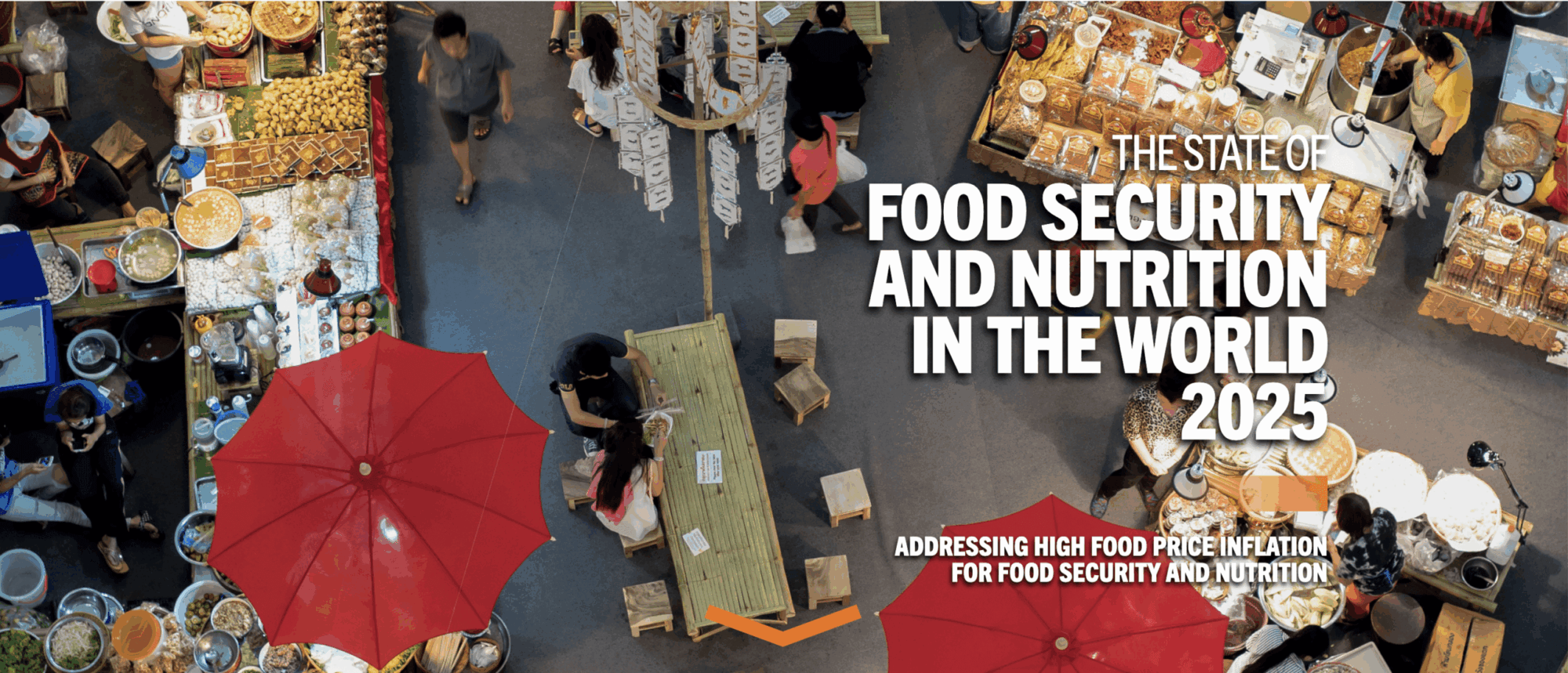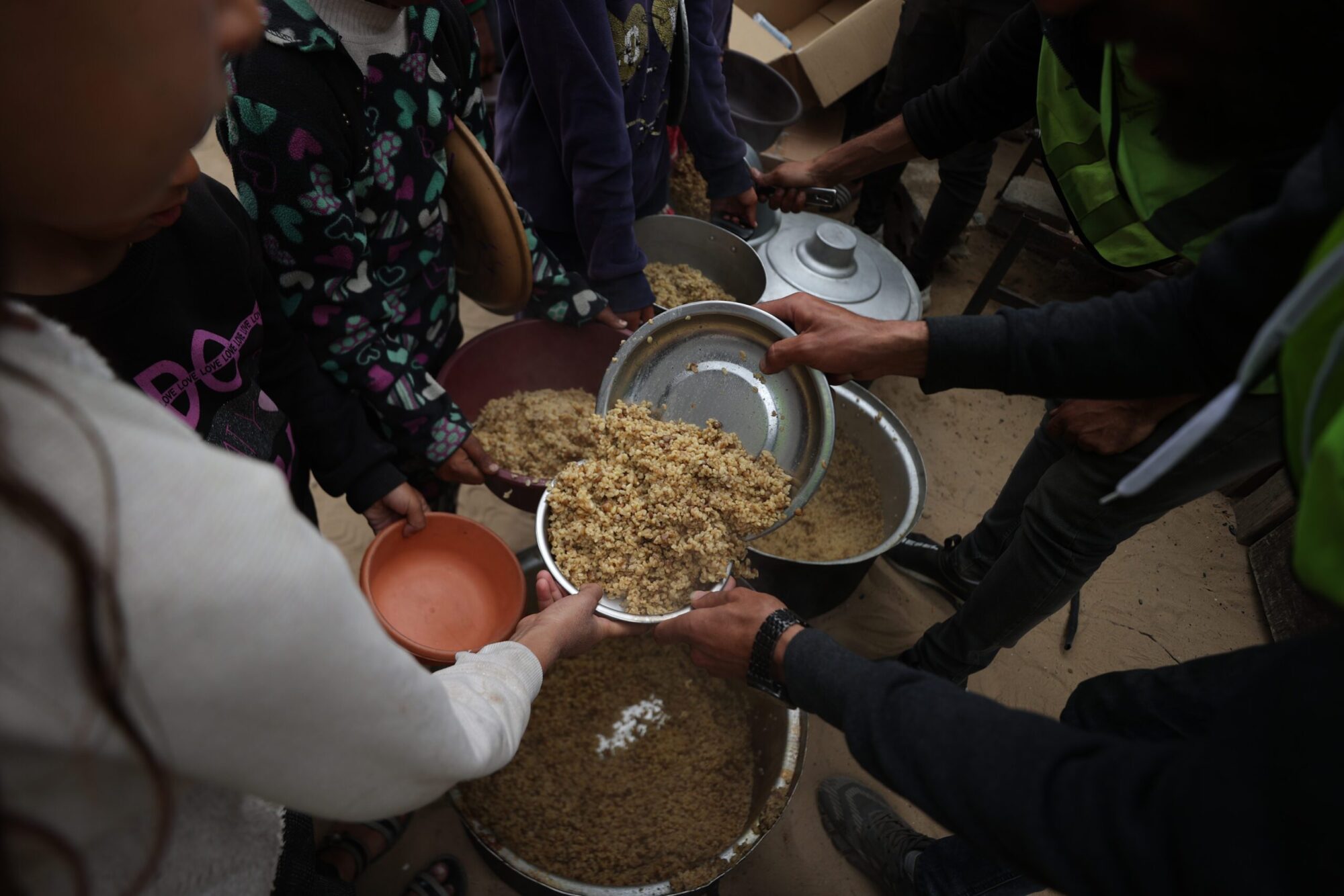Although more than 90 percent of Rohingya refugees in Cox’s Bazar have received emergency food assistance, limited access to a well-diversified and balanced diet remains a major concern.
As in 2018 the World Food Programme (WFP) is expanding its e-voucher programme for Rohingya refugees — which allows people to shop for a wider range of foods, including rice, lentils, fresh vegetables, eggs and dried fish.
I spoke to WFP’s Bangladesh Country Director Christa Räder. She emphasized that giving refugees food vouchers makes sense on all levels: it leads to more choice and nutritious diets, it empowers women, and in the long run it costs less than distributing actual food.

WFP/Saikat Mojumder
WFP Country Director in Bangladesh, Christa Räder, meets Rohingya women registering for e-voucher assistance in Cox’s Bazar.
What role do women have in food assistance?
When you visit the camps, it is evident that it is women who make the food decisions in their families. So our best bet to promote food security and take good care of all family members lies with the women — we need to give the family’s food assistance card to them, regardless of who is the head of household. In fact, we have been doing this since 2014. In the registered camps, it is women whose biometrics are taken for identification and who are the “entitlement holders”.
On a practical level, this enhances the likelihood of families getting their meals regularly as women stay in or around the camps, where food can be purchased, while men might move elsewhere looking for work.

WFP/Saikat Mojumder
Refugee women are happy and proud to be in control of their families’ food assistance cards.
More importantly, having the cards in their own names enhances women’s control over resources and boosts their self-confidence and decision-making power, which they will exercise for the benefit of their whole family. Refugee women are happy to be in control of their food-assistance cards. They wear them with pride, in a neat plastic folder hanging from a ribbon around their neck, like we would wear our identity cards for the organizations we work for.
They feel respected, uplifted, recognized. This is something they are not really used to — at the beginning they feel slightly nervous and daunted by this role, but after a while they start enjoying it. Now they have a purpose to leave their homes. When they meet other women at the WFP shops, they discuss prices and talk about their lives — their world is no longer limited to their shelters.
The shift is not an easy one: in this society, not only do women face great challenges going out and earning an income, they are also exposed to all sorts of harassment. So at the same time as we give them power over resources, we also need to ensure their safety and dignity, for example having shops close to the shelters they now call home.
How far-reaching is WFP’s e-vouchers programme in the camps?
WFP is expanding the reach of its e-voucher scheme to improve diet diversity for refugee families. By the end of 2017, 90,000 refugees had access to e-vouchers and the plan is for new arrivals in the first half of 2018 to also get access to the scheme. This means reaching out to approximately 655,000 people — and having another 140,000 women who will hold the food entitlement of their families.

WFP/Shehzad Noorani
WFP’s electronic vouchers allow people to buy foods of their own choice, which allows for more diversified and nutritious diets.






